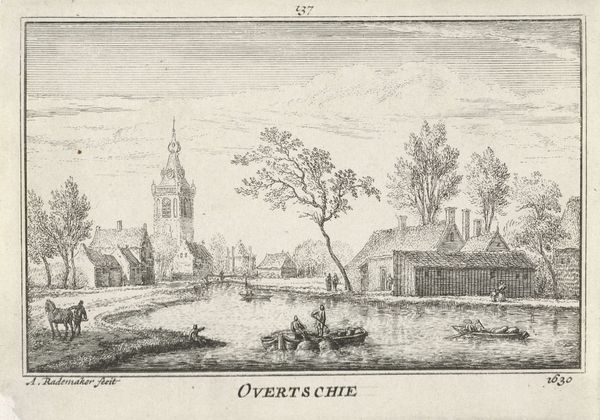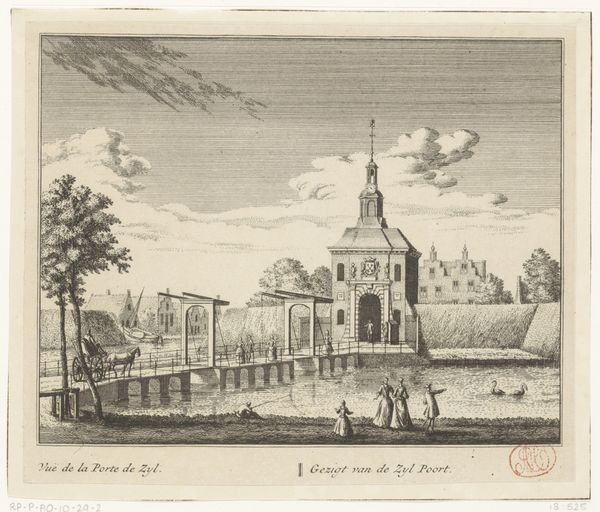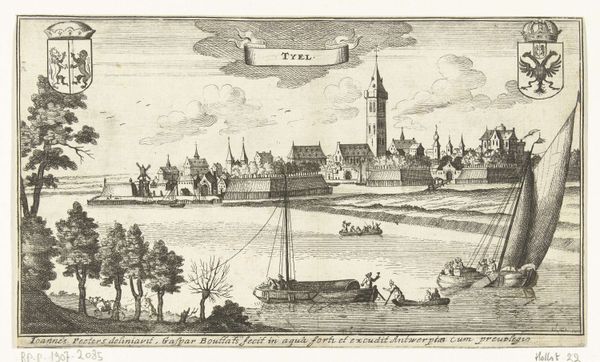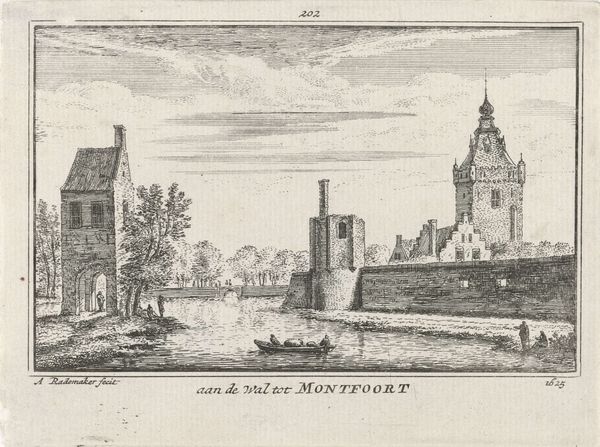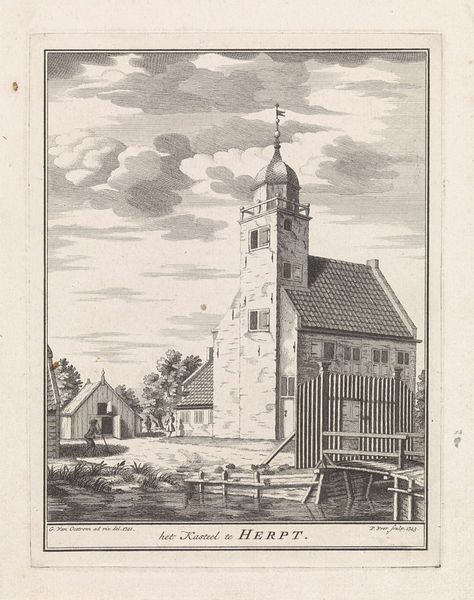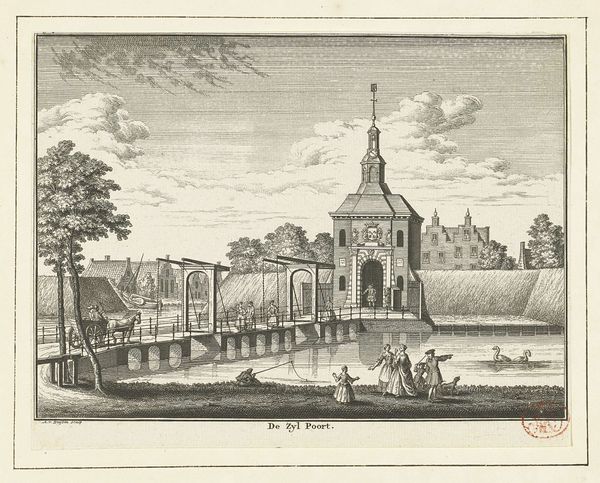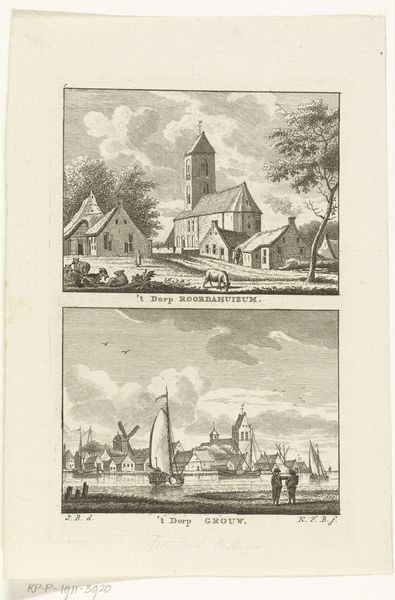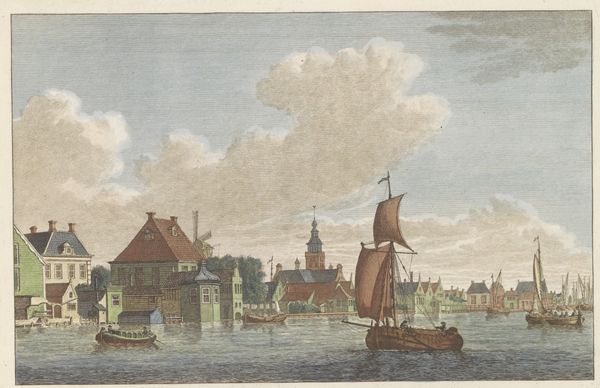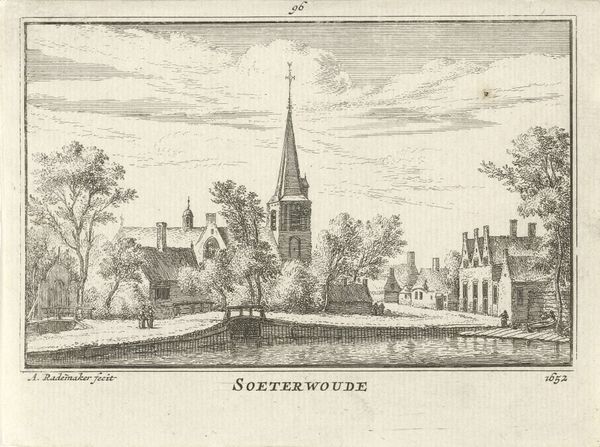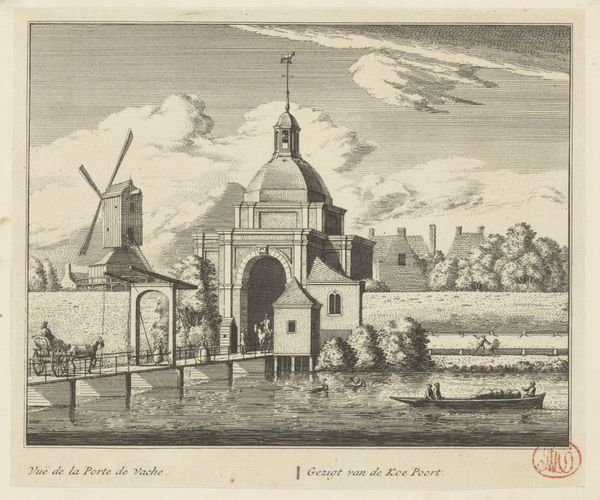
print, etching, engraving
#
dutch-golden-age
# print
#
etching
#
landscape
#
cityscape
#
engraving
Dimensions: height 80 mm, width 115 mm
Copyright: Rijks Museum: Open Domain
Curator: Here we have Abraham Rademaker's "Gezicht op Overschie," an etching and engraving made sometime between 1727 and 1733. It offers us a view of the town as seen across the water. Editor: It feels like looking at a memory, faded but precise. There's a gentle tranquility about it, despite the details of daily life captured—boats on the water, the houses clustered along the shore, that striking church tower. Curator: Indeed, the tower certainly dominates the scene. As a visual symbol, it reflects not just religious faith but also civic pride. It acts as a strong identifier for the town itself. Notice the way Rademaker positions it centrally, almost like a spiritual anchor for the community. Editor: And consider the sailboats – not just modes of transport, but emblems of Dutch mercantile power during this era. Their presence subtly whispers of trade and prosperity, even in this relatively quiet town view. It’s interesting how everyday life blends with potent symbols of larger socio-economic realities. Curator: The small boats, too, aren’t just incidental; they suggest the daily rhythms of life along the Schie river. Rademaker's choice to depict them, teeming with people, helps construct an image of a dynamic community connected by the waterway. Editor: It speaks to how integral waterways were to the Dutch identity, culturally and economically. A source of livelihood and a connector of communities. But what strikes me most is the detailed rendering through such delicate lines. It makes me think of cultural continuity—how meticulous record-keeping was prized. Curator: Precisely. This print isn't just art; it's a historical document reflecting the values and preoccupations of its time, the river at the center as this village and people exist together and form a shared, and documented, community identity. Editor: Rademaker invites us not just to see Overschie, but to imagine it and its people as an integral part of Dutch history. That interplay between meticulous record and evocative depiction is what resonates the most. Curator: Absolutely, the symbolism of this etching reminds us how art and history can come together. A frozen moment containing collective hopes and histories, preserved in ink for centuries.
Comments
No comments
Be the first to comment and join the conversation on the ultimate creative platform.
